MENA Wireless Routers Market Size
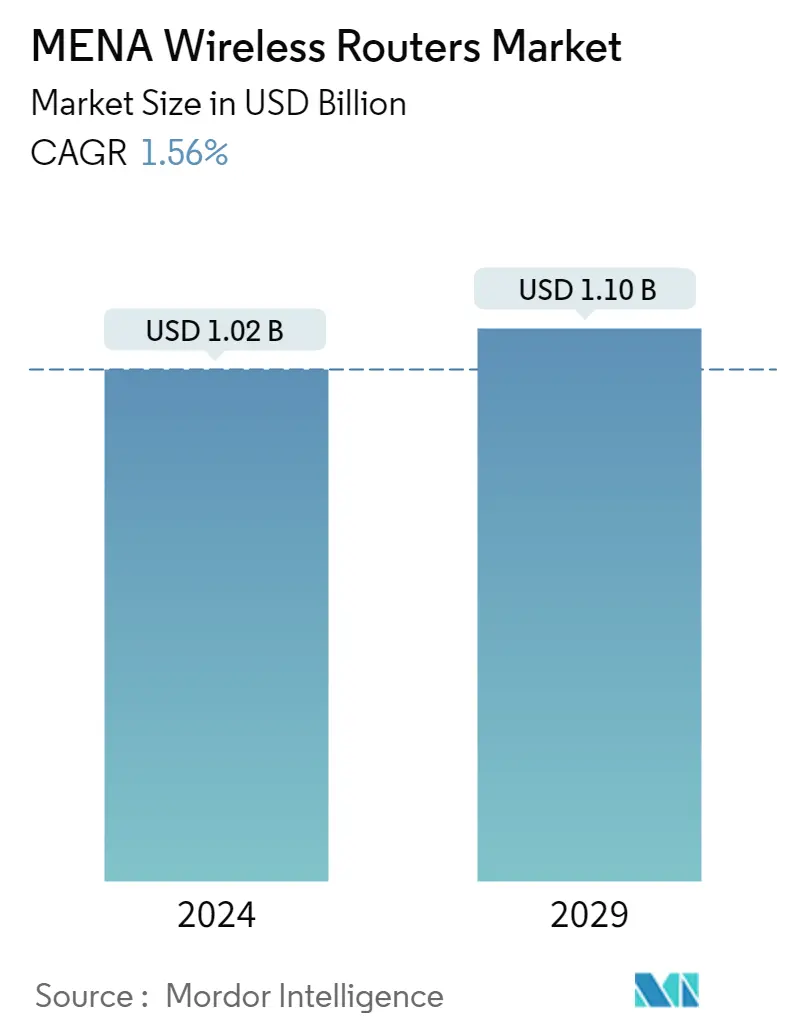
| Study Period | 2018 - 2028 |
| Base Year For Estimation | 2022 |
| Market Size (2023) | USD 1.00 Billion |
| Market Size (2028) | USD 1.08 Billion |
| CAGR (2023 - 2028) | 1.56 % |
| Market Concentration | High |
Major Players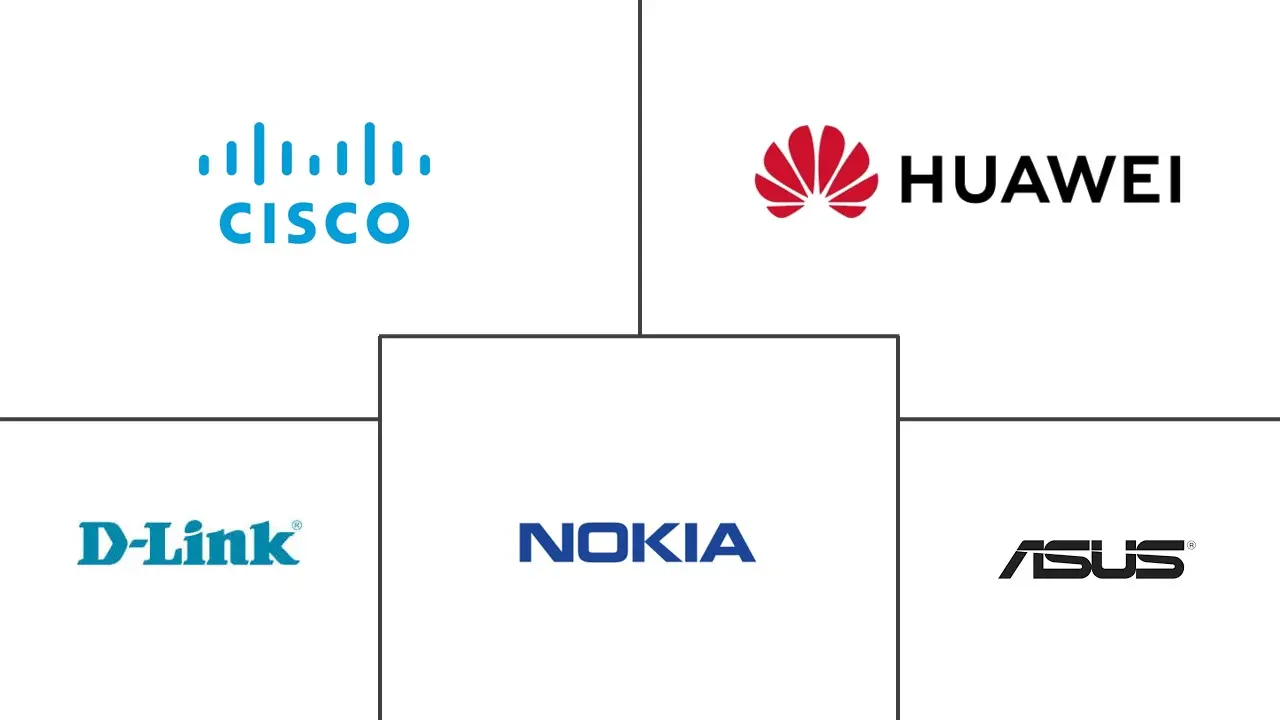
*Disclaimer: Major Players sorted in no particular order |
Need a report that reflects how COVID-19 has impacted this market and its growth?
MENA Wireless Routers Market Analysis
The MENA Wireless Routers Market size is expected to grow from USD 1.00 billion in 2023 to USD 1.08 billion by 2028, at a CAGR of 1.56% during the forecast period (2023-2028).
The increased application of data and internet services in the region would drive the growth prospects for Wireless Routers in the Middle East and North Africa region until the forecast period.
- Wireless routers include wireless access points that provide access to the internet or a private computer network. Depending on the manufacturer and model, it functions in a wired local area network, wireless-only LAN, or mixed wired and wireless networks.
- The major factor for the growth of wireless technology over the years has been the regularly changing standards set for improving the features of the routers.
- Wireless router technology has evolved steadily over the past decade, keeping pace with advances in standards set by the Institute of Electrical and Electronics Engineers (IEEE). These standards are updated regularly to improve network throughput in terms of maximum speeds and transmission capabilities.
- These upgrades have given the companies in the market the means to strive for innovation and have successfully satisfied the customers' demand for higher bandwidth and faster internet. The key market drivers are increasing consumer demand for web-enabled devices and growth in IP traffic.
- Moreover, the increasing demand for faster internet connectivity among consumers has deteriorated due to the high rise in the number of effective devices being connected, and this is spurring the demand for wireless routers with appropriate connectivity.
MENA Wireless Routers Market Trends
Growth in Internet Traffic and Increasing Consumer Demand for Internet-enabled Devices
- The Middle East and North Africa internet traffic is growing rapidly, driven by new internet users with increasing Wi-Fi expansion and high demand for video services.
- With the rise in high internet traffic and devices, average fixed broadband speed, and average internet users, the Middle East and North Africa Wireless Routers Market are expected to grow exponentially during the forecast period.
- Further, with the advent of IoT and changing consumer preferences toward purchasing various gadgets and wearables capable of operating and performing a plethora of functions with internet connectivity, it is also set to propel the growth of the wireless router market over the forecast period.
- In the residential sector, the wireless traffic jam will only worsen as an expanding array of smart devices increases demand for home Wi-Fi networks, from garage door openers to bathroom scales.
- According to Cisco, The number of devices connected to IP networks will likely be more than three times the global population by 2023. There will likely be 3.6 networked devices per capita by 2023, up from 2.4 networked devices per capita in 2018.
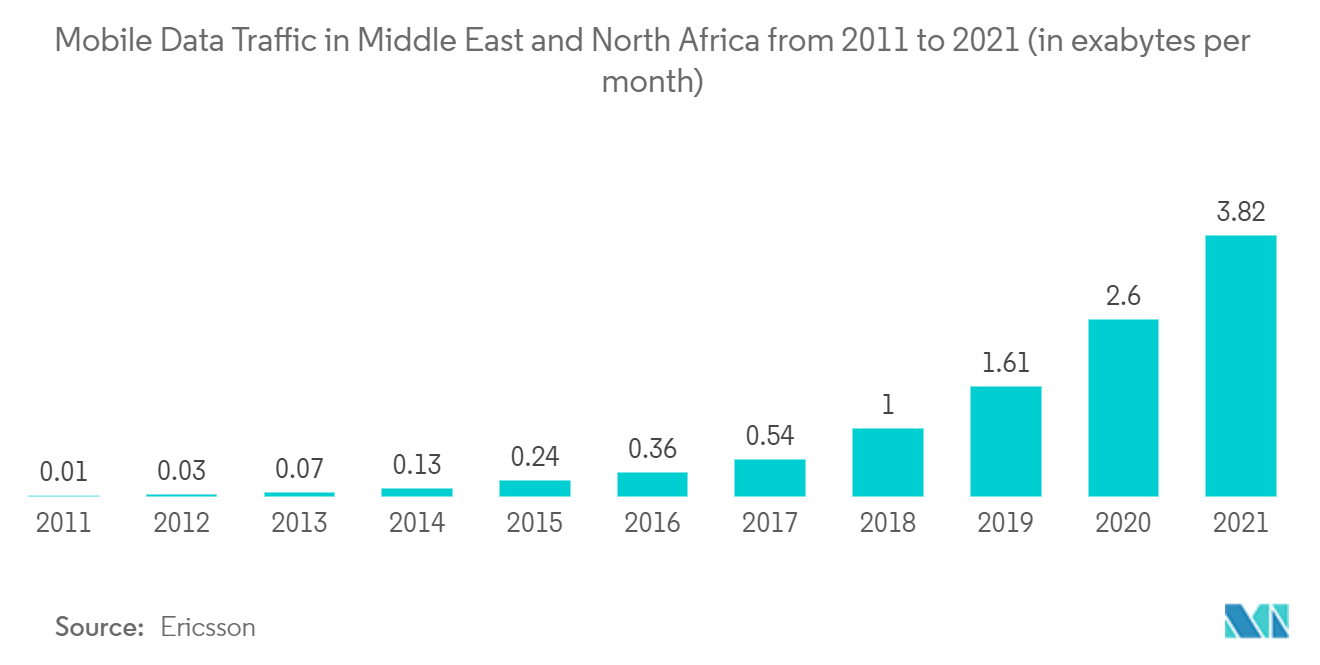
Increase in the bandwidth requirements across Enterprises owing to Digitization
- With the work-from-home (WFH) that became the new trend during the COVID-19 pandemic, players and individual consumers were occupied with securing their various IT products for their employees.
- As a result, supplies of IT peripherals, including wireless routers, led to a sharp spike in demand as everyone navigated through the unprecedented COVID-19 situation.
- With IoT and Industry 4.0 norms gaining popularity, industrial users are expected to replace cabled networks with wireless connections, up to and including closed-loop, real-time control.
- For businesses, priorities differ from most consumer users: security, support, remote access, business-grade VPN, WAN redundancy, connectivity options, and scalability rank higher than absolute raw speed, value for money, or quality of service.
- Moreover, companies are introducing new products and strategizing for expansion to leverage the growing demand in the market.
- For instance, in March 2021, Netgear launched its Nighthawk RAX20 wireless router in India, which connected with more than 20 devices in a home or small office.
- The Nighthawk RAX20 provides consistent and powerful signal strength to multiple devices simultaneously so that users can experience smooth gaming and 4K UHD video streaming, faster file transfers, and backups, and boosts overall work productivity.
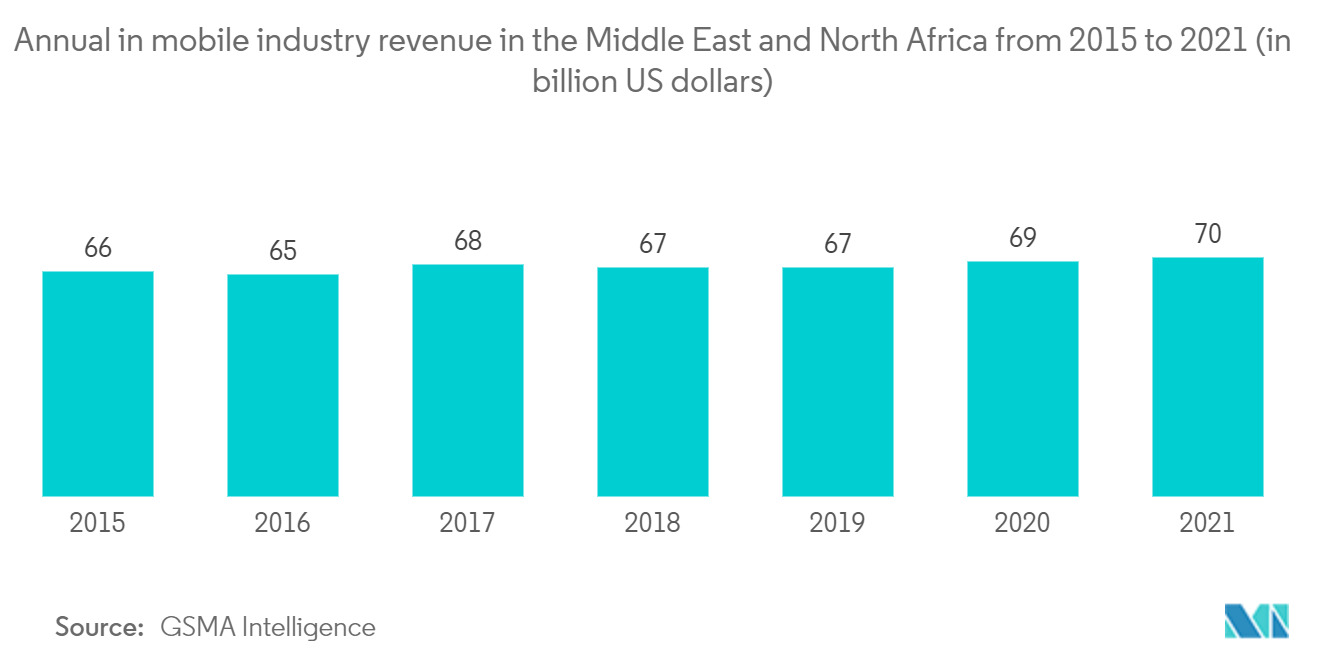
MENA Wireless Routers Industry Overview
The Middle East and North Africa Wireless Routers Markets are quite competitive, with diverse firms of different sizes. This market is anticipated to encounter several partnerships, mergers, and acquisitions as organizations continue to invest strategically in offsetting the present slowdowns they are experiencing. The market comprises key solutions and service providers, Cisco, Nokia, D-Link, Huawei, and ASUS.
In April 2023, Vehicle tracking and telematics company Netstar announced its partnership with Vodacom Business to offer Wi-Fi to commuters on thousands of minibus taxis around South Africa. The company's telematics devices installed in Toyota minibuses can double as Wi-Fi routers.
In November 2022, Huawei announced the launch of SD-WAN and Wi-Fi 7 Series products and innovations in Saudi Arabia at the IP Club KSA forum. The company's SD-WAN offered an end-to-end solution integrating branch interconnection routers, Wi-Fi access, campus switches, and a unified network management platform.
MENA Wireless Routers Market Leaders
ASUSTeK Computer Inc.
Huawei Technologies Co., Ltd.
D-Link Systems
Nokia Corporation
Cisco Systems, Inc.
*Disclaimer: Major Players sorted in no particular order
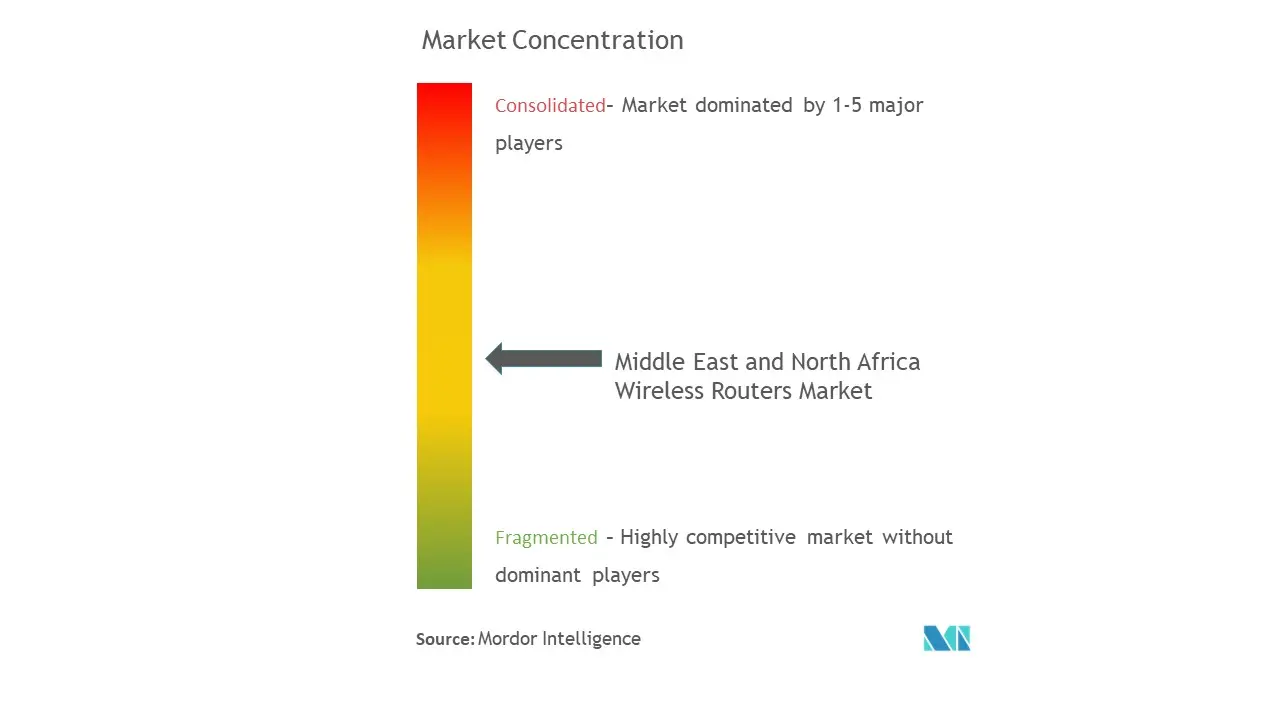
MENA Wireless Routers Market News
- March 2023: Ooredoo group announced that it selected Nokia to upgrade its existing radio access networks (RAN) and deploy new sites in Algeria and Tunisia. This will likely improve network performance and help Ooredoo prepare for launching 5G services in the future.
- September 2022: Zain KSA partnered with Huawei to deploy the third-generation 5G RAN product MetaAAU for the 5G carrier aggregation coverage extension. Integrating MetaAAU into its 5G network, Zain KSA was expected to enable more users to benefit from its wide range of services after expanding coverage and capacity and increasing the network speed.
MEA Wireless Routers Market Report - Table of Contents
1. Introduction
1.1 Study Assumptions and Market Definition
1.2 Scope of the Study
2. RESEARCH METHODOLOGY
3. EXECUTIVE SUMMARY
4. MARKET INSIGHTS
4.1 Market Overview
4.2 Industry Attractiveness - Porter's Five Forces Analysis
4.2.1 Bargaining Power of Buyers
4.2.2 Bargaining Power of Suppliers
4.2.3 Threat of New Entrants
4.2.4 Threat of Substitutes
4.2.5 Intensity of Competitive Rivalry
4.3 Industry Value Chain Analysis
4.4 Value proposition of broadband and Wi-Fi in the MENA countries
5. MARKET DYNAMICS
5.1 Market Drivers
5.1.1 Increasing internet and broadband penetration
5.1.2 Supportive Government initiatives and roll out of Wi-Fi 6
5.2 Market Restraints
5.2.1 Lack of advanced infrastructure in North Africa
6. Market segmentation
6.1 By Component Type
6.1.1 Product
6.1.2 Services
6.2 By End User
6.2.1 Residential
6.2.2 Enterprise
6.3 By Country
6.3.1 Saudi Arabia
6.3.2 UAE
6.3.3 Qatar
6.3.4 Bahrain
6.3.5 Oman
6.3.6 Libya
6.3.7 Israel
6.3.8 Rest of MENA
7. KEY VENDOR PROFILES
7.1 Cisco Systems, Inc.
7.2 Nokia Corporation
7.3 D-Link Systems
7.4 Huawei Technologies Co., Ltd.
7.5 Hewlett Packard Enterprise (HPE)
7.6 ASUSTeK Computer Inc.
7.7 Linksys Holdings, Inc.
7.8 TP-Link Technologies Co., Ltd.
7.9 Ubiquiti Inc.
7.10 Saudi Telecommunication Company
MENA Wireless Routers Industry Segmentation
A wireless router is a device that performs the functions of a router and includes the functions of a wireless access point with the help of a single, dual, and tri-band. Both residential and enterprise wireless routers are considered in the scope of the study.
The Middle East and North Africa Wireless Routers Market are segmented by Component Type (Product and Services), by End User (Residential and Enterprise), and by Country (Saudi Arabia, UAE, Qatar, Bahrain, Oman, Libya, Israel, Rest of MENA). The market sizes and forecasts are provided in terms of value (USD) for all the above segments.
| By Component Type | |
| Product | |
| Services |
| By End User | |
| Residential | |
| Enterprise |
| By Country | |
| Saudi Arabia | |
| UAE | |
| Qatar | |
| Bahrain | |
| Oman | |
| Libya | |
| Israel | |
| Rest of MENA |
MEA Wireless Routers Market Research FAQs
How big is the Middle East and North Africa Wireless Routers Market?
The Middle East and North Africa Wireless Routers Market size is expected to reach USD 1.00 billion in 2023 and grow at a CAGR of 1.56% to reach USD 1.08 billion by 2028.
What is the current Middle East and North Africa Wireless Routers Market size?
In 2023, the Middle East and North Africa Wireless Routers Market size is expected to reach USD 1.00 billion.
Who are the key players in Middle East and North Africa Wireless Routers Market?
ASUSTeK Computer Inc., Huawei Technologies Co., Ltd., D-Link Systems, Nokia Corporation and Cisco Systems, Inc. are the major companies operating in the Middle East and North Africa Wireless Routers Market.
Middle East and North Africa Wireless Routers Industry Report
Statistics for the 2023 MENA Wireless Routers market share, size and revenue growth rate, created by Mordor Intelligence™ Industry Reports. MENA Wireless Routers analysis includes a market forecast outlook to for 2023 to 2028 and historical overview. Get a sample of this industry analysis as a free report PDF download.
